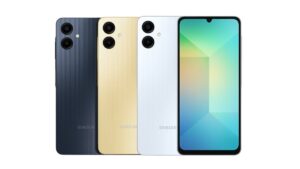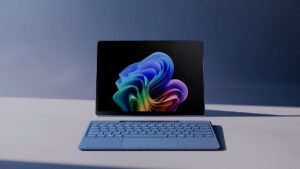
Computer keyboard
A computer Keyboard is a primary input device that consists of a number of different keys through which data is provided to the computer. It is used to input numeric and alpha-numeric data and commands. A keyboard is also used to enter the screen coordinates, to select the menu-options or graphic functions, etc. Whenever the user presses the keys, an input in the form of binary data is provided to the computer.
History of Keyboard
In the year of 1870s, teleprinter-like devices were used to simultaneously type and transmit stock market text data from the keyboard across telegraph lines to stock ticker machines to be immediately copied and displayed onto ticker tape.
A teleprinter in its more contemporary form was developed from 1907 to 1910 by American mechanical engineer Charles Krum and his son Howard, with early contributions by electrical engineer Frank Pearne. The Earlier models were developed separately by individuals such as Royal Earl House and Frederick G. Creed.
Herman Hollerith has developed the first keypunch devices, which soon evolved to include keys for text and number entry akin to normal typewriters by the 1930s. while the keyboard on the keypunch device played a strong and lead role in data entry and storage for just as long.
Actually, The development of the earliest computers incorporated electric typewriter keyboards. And The development of the ENIAC computer incorporated a keypunch device and that has both the input and paper-based output device,
And The keyboard remained the primary and, the most integrated computer peripheral into the era of our personal computing until the introduction of the mouse as a consumer device in 1984. By this point, text-only user interfaces with sparse graphics gave thanks to comparatively graphics-rich icons on the screen.
Infrared Keyboard
An infrared keyboard is also a keyboard whose functionalities are similar to a traditional keyboard. The only difference is, it does not require any physical connection with the system i.e., no cables are required for making the connections. Rather they make use of the infrared light. Itis through this light that the infrared devices communicate with the receiver unit This light cannot pass through the objects, hence it is necessary that the infrared keyboard is in the direct line of sight with the receiver unit This receiver unit has a physical connection with the actual system and has the ability to receive the signals from the infrared keyboard thereby facilitating for the communication with the actual system.
Capacitive Switch
This is one type of switch that is present on the keyboard. Its working principle is that it converts the action of the switch into a logic signal. It basically consists of two metal plates separated at a certain distance from each other.
Whenever a particular key on the keyboard is pressed the two metal plates get closer to each other causing the change of capacitance existing between them. Once this change in capacitance gets detected, it is converted into a logic level that specifies an action of the key.
The advantage of this type of switch is that they do not have any sort of metal contacts and they do not need any oxidation. But there is also a disadvantage with them that they need a special circuit containing oscillators, PLL, and comparator for carrying out the conversion of action of the switch to logic signals.
Membrane Switch
This is another type of switch present on the keyboards. The presence of such types of switches will make the keyboards look thin. It consists of two plastic (or) rubber sheets called the row layer and column layer (sheets) Between these two sheets, there is another sheet containing holes at the positions of the key. Hence it consists of a total of three-layer.
The topmost layer of this represents the row layer containing a conductive line that runs under each row of keys. Similarly, the bottom-most layer represents the column layer and it also contains a conductive line that runs under each column of keys.
Whenever a certain key is pressed, the top row line gets in contact with the bottom column line by means of the hole. This action once detected will be communicated to the PC through the interfacing circuits.


